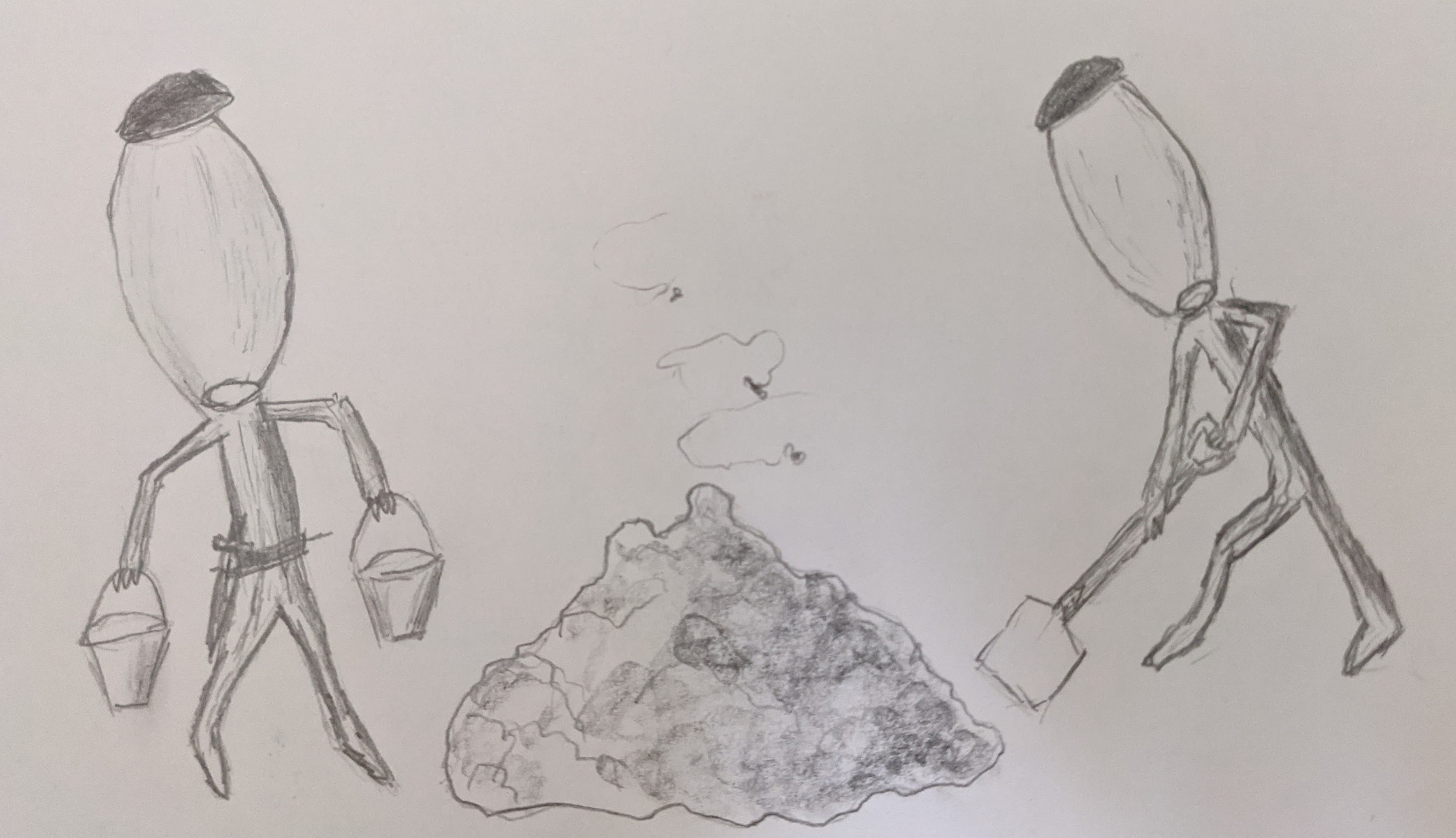
Pilobolus
by Cab Davidson
Armour Class: 7
Hit Dice: 2**
Move: 90’(30’)
Attacks: 1 weapon or special
Damage: By weapon or 8d6
Number Appearing: 1d6 (40d10)
Save As: Fighter 2
Morale: 8 (12)
Treasure Type: Zero (M)
Intelligence: 8
Alignment: Neutral
XP Value: 30
The Pilobolus is both the friendliest and most dangerous of the myconoids. Each overall organism is inhabits a deep, wet cave, usually one where at least a modicum of organic matter leeches into from the surface world. They are at heart a well meaning people, with each myconoid creating countless myconids to do their bidding, typically to explore and clean neighbouring caves to bring back nutrient for the parent organism. They are not warlike, they do not seek conquest, they merely seek to exist.
They would be unremarkable except for their huge jelly like heads. Each Pilobolus myconoid resembles a spindly, pale, small (4’ tall) humanoid with a colossal jelly like head and a dark, black cap on top. This head, and the dark lining at the base of it, give the pilobolus myconid the most remarkable eyesight in the fungal kingdom - the have perfect (120’) infravision and can see all invisible creatures.
For most of its life a pilobolus myconid will feel no urge to act in any way other than as a servant of the myconoid mycelium, but upon reaching a final level of maturity they have an urge to settle somewhere near an outer cave and wait, as a standing guard and as the means by which the myconoid reproduces. This is the time when the physiology of their extraordinary heads comes in to play. They are light sensitive, and upon exposure to any light brighter than a torchlight (so either a lantern or any magical light source) within 90’, they point their heads towards the source and literally explode, flinging sticky fragments of their spore laden head caps at the light. Fragments invariably stick harmlessly to the target, turning that target into a vector to distribute those spores.
At any age, however, a myconid can use this same ability when in a tight spot to devastating effect. When cornered with no other options a pilobolus myconid can point its head at a target and choose to explode in a targeted attack. This is lethal to the myconid in question, but by weaponising their spore hat they can (if a normal hit roll succeeds) inflict 8d6 hp of damage to a single target.
When protecting their home myconoid, pilobolus myconids have a morale of 12 and will freely sacrifice themselves. Otherwise, if gathering nutrients for example, they have a morale of 8.
Pilobolus myconoids are not avaricious but they understand that other creatures value treasure and are fully aware of the worth of objects they find. Over their incalculable lifespans they will gather anything shiny or valuable that they can find, and freely exchange it for information, nutrition or protection. Pilobolus have excellent relations with Shadow Elves, who view them as handy cohabitees in the darker corners of the underground world, their sentries exploding if anything that relies on having a light source comes too close. But many other monstrous humanoids see the myconoids as prey, hunting them to extract the water-rich jelly from their heads.
And on the subject of pilobolus, this is the real thing
Which in super slow motion is this
Tiny fungus that grows on horse/cow poop. The initial acceleleration of the spore cap is about on par with a bullet, it sends the spore-hat about 2m into the air, it lands on cleaner grass, gets eaten by another cow, gets pooped out, grows on more poop. And yes, I do believe there is a parasitic worm that sits on the spore hat and waits to be flung off to be eaten by cows to infect them.
Sometimes you ain't going to come up with something weirder than nature. The next 3 species will all be based on different aspects of fungal biology too. Plenty more weird to follow...